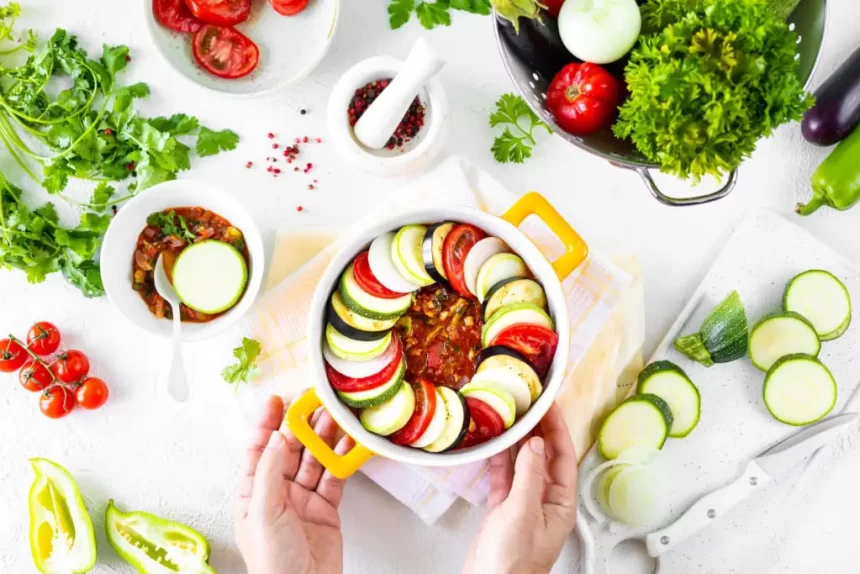Cooking is an art, and the secret to great cuisine often lies in the ingredients. Adding bold and unique components can elevate your daily meals to remarkable levels. Incorporating various ingredients, such as sour fruits, uncommon spices, and fresh herbs, can create layers of flavor that motivate the taste. Let’s look at how these items can improve your cooking and add a professional touch to your dishes.
Incorporating Sour Fruits for Depth and Flavor
Sour fruits are flexible and can bring an acidic and pleasant acidity to any recipe. Fruits like tamarind, passion fruit, green mango, and lime can be used in both savoryy and sweet dishes. Each of these has unique qualities that help flavour complexity.
- Tamarind, known for its rich, bitter flavour, is ideal for marinades and stews. Tenderise pork using tamarind paste to add a sweet and sour touch. It is also commonly used in chutneys and Asian noodle food styles.
- Passion fruit’s tropical tartness makes it ideal for desserts, snacks, and sauces. It’s perfect for balancing sweetness in treats like cheesecakes or making colourful salad dressings.
- Unripe green mango unripe has a strong, tangy flavour that pairs well with savory dishes. For a refreshing crunch, toss slices into curries or shred them into salad.
- Lime juice and zest, a prevalent component in many cuisines, boost dishes such as tacos, soups, and stir-fries. It’s also useful in cocktails and pastries to give an extra bite.
These types of sour fruits not only enhance taste but also add a natural acidity that balances rich or fatty ingredients, making them a must-have in your kitchen.
Bold Spices for an Aromatic Boost
Spices form the base of delicious cookery. Experimenting with bold spices can transform ordinary dishes into aromatic delights. Spices to try are:
- Sumac: With its citrussy tang, this Middle Eastern spice pairs well with roasted vegetables, grilled meats, and salads.
- Smoked paprika: Its rich, smokey flavor enhances soups, stews, and marinades.
- Star anise: It is a licorice-flavored spice that adds richness to broths and braised meals in Asian cuisine.
- Cumin seeds or powder, with their intense and warm flavor, are ideal for curries, roasted vegetables, and even breading.
Combining spices thoughtfully can create signature blends that define your cooking style. For instance, mix cumin, coriander, and smoked paprika for a versatile spice rub.
Herbs That Pack a Punch
Fresh herbs bring life and vibrancy to any dish. They bring a layer of freshness that dried spices often can’t replicate. Consider these herbs for bold flavors:
- Cilantro: Adds a bright, citrusy note to tacos, rice dishes, and salads.
- Basil: Essential for Italian dishes, it’s also excellent in Thai curries and infused oils.
- Mint: Perfect for cooling down spicy dishes and enhancing drinks, desserts, and salads.
- Dill: Ideal for seafood and yogurt-based sauces, providing a delicate anise-like flavor.
Using herbs at the right stage of cooking is key. Add hardy herbs like rosemary early to infuse flavor, and delicate herbs like parsley or basil at the end for a fresh finish.
Unconventional Ingredients for Creative Dishes
Occasionally, exploring unconventional approaches yields exceptional culinary creations. Here are a few unique ingredients to try:
- Black Garlic: This aged garlic has a sweet, umami flavor that’s perfect for sauces, pasta, and even pizza.
- Yuzu: A Japanese citrus fruit, its juice or zest adds a bright, tangy flavor to dishes and cocktails.
- Fermented Ingredients: Miso paste, kimchi, or fish sauce. These ingredients add depth and umami to broths, stir-fries, and marinades.
- Edible Flowers: Flowers like nasturtiums or pansies not only look beautiful but also add subtle flavors to salads and desserts.
Incorporating unconventional ingredients allows you to break away from traditional flavors and create dishes that stand out.
Balancing Flavors with Acidity and Sweetness
Creating balanced flavors is a hallmark of great cooking. Acidity from sour fruits or vinegars contrasts beautifully with sweetness from honey or fruits. For example:
- Tamarind paste can be used in barbecue sauce to balance the sweetness of molasses.
- Add green mango to a spicy curry to create a tangy counterpoint.
- Pair passion fruit with a rich chocolate cake to cut through the heaviness.
Understanding how to balance flavors ensures every bite is satisfying and harmonious.
Techniques to Highlight Bold Ingredients
Using bold ingredients requires proper techniques to bring out their best. Here are some tips:
- Marinating: Use tamarind, lime, or passion fruit in marinades to tenderize meat and infuse flavor.
- Infusion: Infuse oils or syrups with herbs like basil or mint for unique dressings and desserts.
- Grilling and Roasting: Bringing out the natural sweetness of sour fruits and vegetables by grilling or roasting them.
These methods ensure that the ingredients shine in every dish.
Creative Pairings to Try
Combining solid components might result in surprising flavour combinations. Here are a few ideas:
- A passion fruit dressing tops a roasted beetroot salad with goat cheese.
- Tamarind-glazed chicken mixed with cilantro lime rice.
- For a tropical twist, serve grilled fish with green mango salsa.
Trying with pairings could result in signature recipes that represent your unique tastes.
Conclusion
Cooking with strong and distinctive ingredients, such as sour fruits, spices, and herbs, may elevate ordinary meals into memorable experiences. Experiment with flavors, balance acidity and sweetness, and explore new techniques to ceate recipes that impress and delight. Begin modestly, but don’t be afraid to challenge yourself as you gain confidence in your culinary adventure.
Lynn Martelli is an editor at Readability. She received her MFA in Creative Writing from Antioch University and has worked as an editor for over 10 years. Lynn has edited a wide variety of books, including fiction, non-fiction, memoirs, and more. In her free time, Lynn enjoys reading, writing, and spending time with her family and friends.















